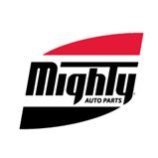-
Welcome to Auto Parts Forum
Whether you are a veteran automotive parts guru or just someone looking for some quick auto parts advice, register today and start a new topic in our forum. Registration is free and you can even sign up with social network platforms such as Facebook, X, and LinkedIn.
Performance parameters of centrifugal pumps
-
Similar Topics
-
By Mighty Auto Parts
The post
link hidden, please login to view appeared first on link hidden, please login to view. When diagnosing engine performance complaints such as misfire symptoms, be advised that several systems and components can contribute to those symptoms. When considering single or multiple misfire codes, some checks may seem farfetched but trust me if not all are considered the symptoms can elude the most experienced technician, resulting in a misdiagnosis. When this […]
The post
link hidden, please login to view appeared first on link hidden, please login to view.
link hidden, please login to view -
By Daysyore
The catalytic converter is a critical component in modern vehicles that plays a crucial role in reducing harmful emissions. This device, typically located in the exhaust system, helps convert toxic pollutants from the engine's exhaust gases into less harmful substances. While catalytic converters have been instrumental in improving air quality and meeting emission standards, they have also become a hot topic of discussion due to their environmental impact, cost, and potential for theft. In this article, we will explore the significance of catalytic converters, their environmental benefits, challenges faced, and potential future developments.
Environmental Benefits:
Catalytic converters have made significant contributions to reducing air pollution and improving overall environmental quality. They primarily work by facilitating chemical reactions that convert harmful pollutants into less harmful compounds. Key environmental benefits include:
1. Emission Reduction: Catalytic converters effectively reduce emissions of harmful pollutants such as carbon monoxide (CO), nitrogen oxides (NOx), and unburned hydrocarbons (HC). These pollutants contribute to smog formation, respiratory issues, and environmental degradation.
2. Compliance with Regulations: Catalytic converters enable vehicles to meet stringent emission regulations imposed by governments worldwide. These regulations aim to mitigate the adverse effects of vehicle emissions on public health and the environment.
Challenges and Concerns:
Despite their environmental benefits, catalytic converters face several challenges and concerns:
1. Precious Metal Usage: Catalytic converters contain precious metals like platinum, palladium, and rhodium, which act as catalysts. The extraction and mining of these metals can have negative environmental impacts, including habitat destruction and water pollution.
2. Cost and Maintenance: Catalytic converters are expensive components, and their replacement or repair can be financially burdensome for vehicle owners. Additionally, improper maintenance or the use of low-quality fuels can lead to premature failure or reduced effectiveness of the catalytic converter.
3. Theft: Catalytic converters contain valuable metals, making them a target for theft. Criminals often remove catalytic converters from vehicles due to their high resale value, leading to inconvenience and financial loss for vehicle owners.
Future Developments:
To address the challenges associated with catalytic converters, ongoing research and development efforts are focused on potential advancements:
1. Alternative Catalyst Materials: Scientists are exploring alternative catalyst materials that can reduce or eliminate the need for precious metals in catalytic converters. This could help mitigate environmental concerns related to metal extraction and lower production costs.
2. Improved Efficiency: Researchers are working on enhancing the efficiency of catalytic converters to further reduce emissions and improve fuel economy. Advancements in catalyst design and optimization of chemical reactions can contribute to more effective pollution control.
3. Anti-Theft Measures: Automotive manufacturers and law enforcement agencies are collaborating to develop anti-theft measures, such as tamper-resistant designs and identification technologies, to deter catalytic converter theft.
Conclusion:
The catalytic converter remains a vital component in the automotive industry's efforts to reduce harmful emissions and improve air quality. While it has made significant environmental contributions, challenges such as precious metal usage, cost, and theft persist. Ongoing research and development endeavors aim to address these concerns through alternative catalyst materials, improved efficiency, and anti-theft measures. As technology advances, striking a balance between environmental impact, automotive performance, and affordability will be crucial in shaping the future of catalytic converters and sustainable transportation.
-
By NAPA
Ron Capps’ bid for a third consecutive Funny Car win at the NHRA Thunder Valley Nationals came to an end in a close second-round race Sunday afternoon at Bristol Dragway. Capps qualified third in his NAPA Auto Care Toyota GR Supra before falling in the quarterfinals to J.R. Todd. The overall weekend performance showed Capps and his Dean ‘Guido’ Antonelli-led team that the drastic changes they made in the early part of the season are paying off as the NHRA Mission Foods Drag Racing Series heads into the hot summer races. Capps leaves Bristol No. 6 in the point standings after eight of 20 races on the 2024 schedule.
Capps was one of several drivers who struggled to find traction in the first qualifying session on Friday, but crew chief Dean ‘Guido’ Antonelli got the NAPA Auto Care entry back on track for the second session. Capps laid down a 3.976-second pass at 320.74 MPH to move up from ninth to third, while also earning a bonus point for making the third-best pass of the session. Capps maintained the No. 3 spot through two more qualifying sessions on Saturday.
The NAPA team’s strong performance carried over into the first round of eliminations on Sunday morning when Capps got a big starting line advantage over opponent Buddy Hull and maintained the lead with a winning 3.962-second pass at 323.12 MPH to Hull’s 4.176 E.T. In a second-round battle with fellow Toyota driver J.R. Todd, Capps ran quicker to the 60-foot and 330-foot marks, but he started to lose ground and finished second behind Todd. Capps ran a 4.001 E.T. at 316.45, while Todd recorded a 3.977 E.T. at 319.75.
“I’m so proud of Guido and our NAPA Auto Care team to go out there and compete like we did, to qualify as well as we did, and not only that, but to do it in completely different conditions like we did,” said Capps, the winningest Funny Car driver at Bristol with seven victories. “We qualified well in the Friday night conditions that we didn’t think we’d see the rest of the weekend. We went out and made a great run in the first round and got lane choice against a really good team, our Toyota teammate J.R. Todd and his team, in the quarterfinals. The fans got their money’s worth. It was a great side-by-side race, but we came up a little bit short. We’ve got a string of hot, summer races coming up and it gives me such confidence knowing Guido’s got a combination for that. I’m just so proud of these guys.”
The next stop for Capps and the Ron Capps Motorsports Funny Car team will come in two weeks at the Virginia NHRA Nationals, June 22-23, at Virginia Motorsports Park outside Richmond.
Start / Finish: No. 3 / def. in quarterfinals
Points Standing / Total: No. 6 / 360 pts. (-220)
Next Race: June 22-23, Virginia NHRA Nationals
How to Watch or Listen: FS1,
link hidden, please login to view NAPA Racing:
link hidden, please login to viewRon Capps: link hidden, please login to view
Ron Capps Motorsports: link hidden, please login to view The post
link hidden, please login to view appeared first on link hidden, please login to view.
link hidden, please login to view -
By Mighty Auto Parts
The post
link hidden, please login to view appeared first on link hidden, please login to view. Pinpointing the reason for a crank but no-start, extended cranking, rough idle or misfi re symptoms can be a challenge that can consume a lot of diagnostic time to resolve the complaint. Often the Malfunction Indicator Light (MIL) will be illuminated and a PO300 random misfire code may be stored in memory. If you are […]
The post
link hidden, please login to view appeared first on link hidden, please login to view.
link hidden, please login to view -
By Counterman
The inaugural High Performance Expo (HPX), the business and consumer show of the North Carolina Motorsports Association (NCMA), will be held from June 3-5, 2025, at the Charlotte Convention Center, followed by area-wide enthusiast activities. The event will bring together all segments of the racing and performance community for the first time in the heart of the auto racing industry.
link hidden, please login to view This first-of-its-kind event is focused on the automotive aftermarket and is meant for professional race teams, manufacturers of new cars and high-performance parts, retail performance shops, industry experts and enthusiasts. HPX 2025 is the gateway to the next level in the world of high-octane racing and automotive performance.
“The High Performance Expo will be a car-centric playground showcasing the best of auto racing and the automotive aftermarket like no other,” said Greg Walter, NCMA chairman of the Board, and executive vice president and general manager of the Charlotte Motor Speedway. “There is no better place to hold this annual event than Charlotte, North Carolina, home of auto racing and a community rich in history and passion for modifying and racing the automobile.”
“The North Carolina racing industry has long wanted to design an experience like HPX to more easily connect our industry and our passionate fans,” said Scott Lampe, vice chairman of NCMA and CFO of Hendrick Motorsports. “HPX 2025 will celebrate this great industry through the lens of our unique community, bringing a level of authenticity featuring VIPs, drivers, celebrities and experts, which can only be done in one place – Charlotte.”
Additional details including speakers, sponsors, seminars, displays and enthusiast activities will be released in the coming months.
The post
link hidden, please login to view appeared first on link hidden, please login to view.
link hidden, please login to view
-






Recommended Posts
Join the conversation
You can post now and register later. If you have an account, sign in now to post with your account.
Note: Your post will require moderator approval before it will be visible.